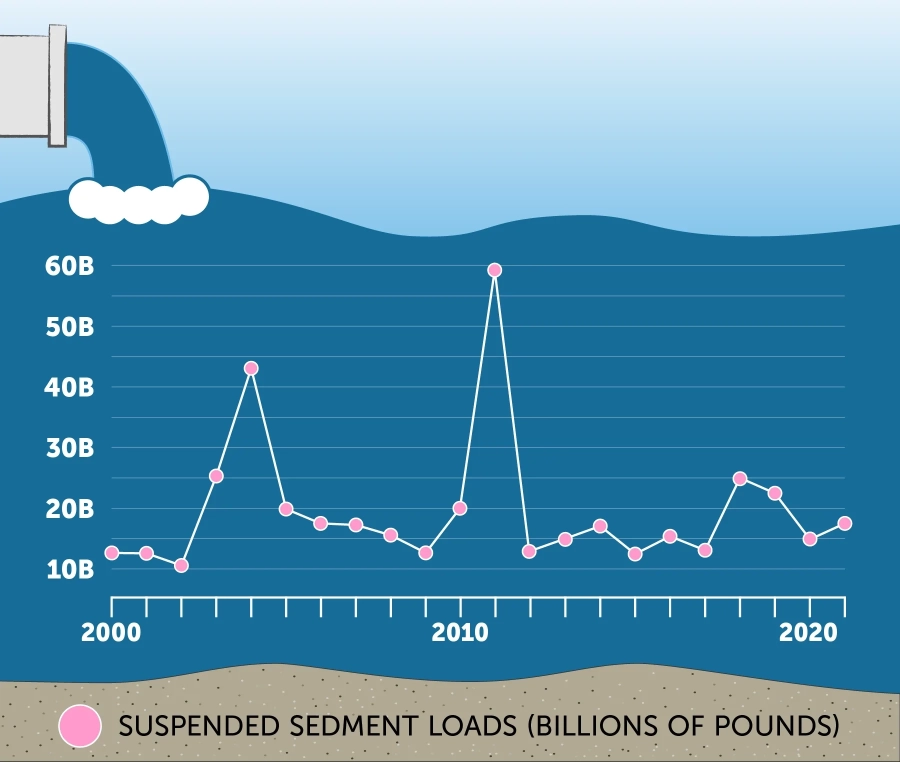Sediment Runoff
Sand, silt and clay are a natural part of the Chesapeake Bay. But in excess amounts, sediment can cloud the waters of the Bay and its tributaries, harming underwater life.

Show image description
The line graph shows the span of time from 2000 to 2021 and phosphorus loads from 0 to 60 billion pounds. It begins in 2000 between 10 and 15 billion pounds and drops slightly in 2001 and 2002 before surging up to almost 25 billion in 2004 and almost 45 billion in 2004. It then drops to 20 billion and continues dropping to below 15 billion in 2009 before increasing again, to a huge peak of nearly 60 billion in 2011. It then drops to under 15 billion in 2012 and goes slightly lower and higher before rising to 25 billion in 2018. It decreases to around 15 billion in 2020, with a slight increase as the chart ends at 2021.
